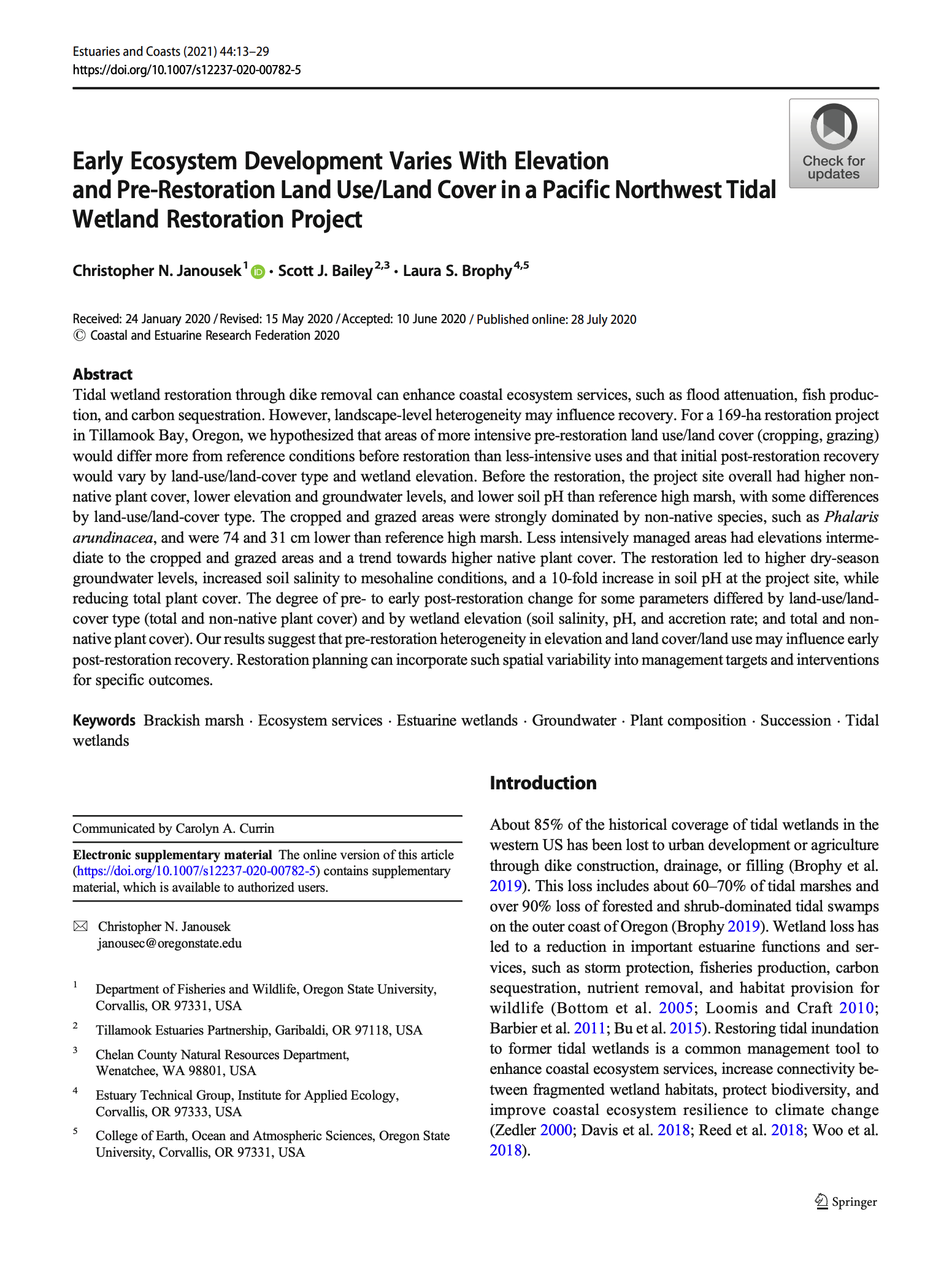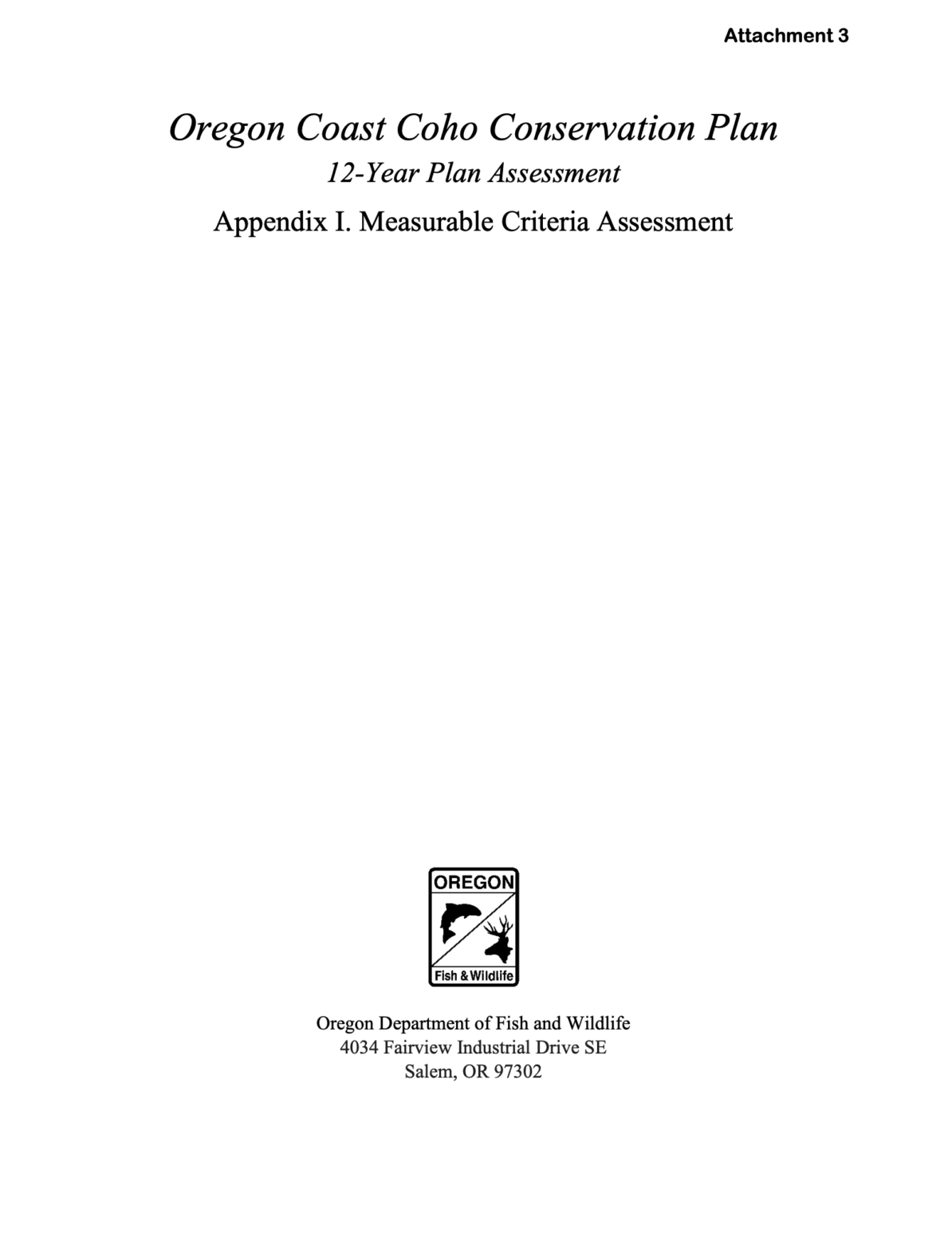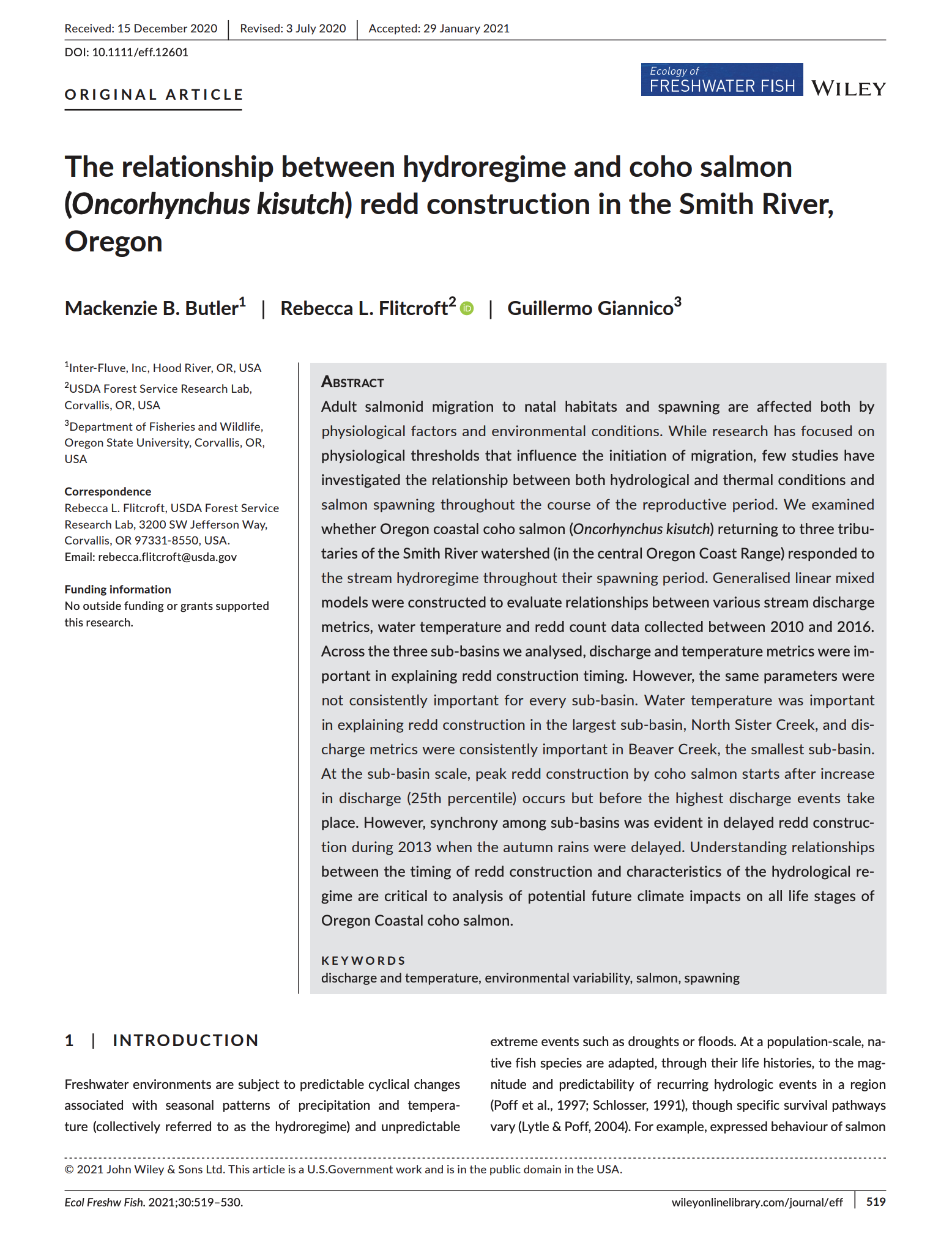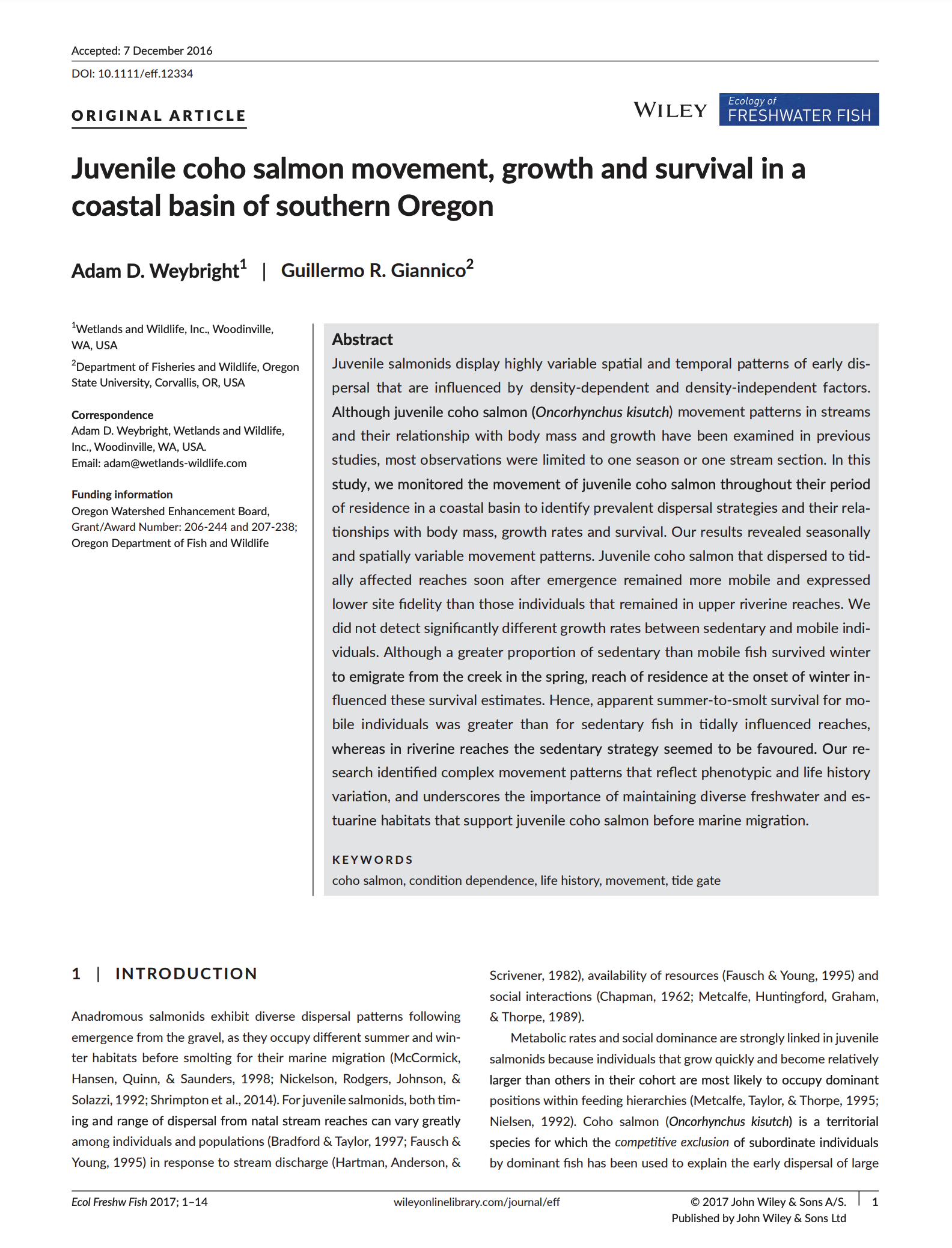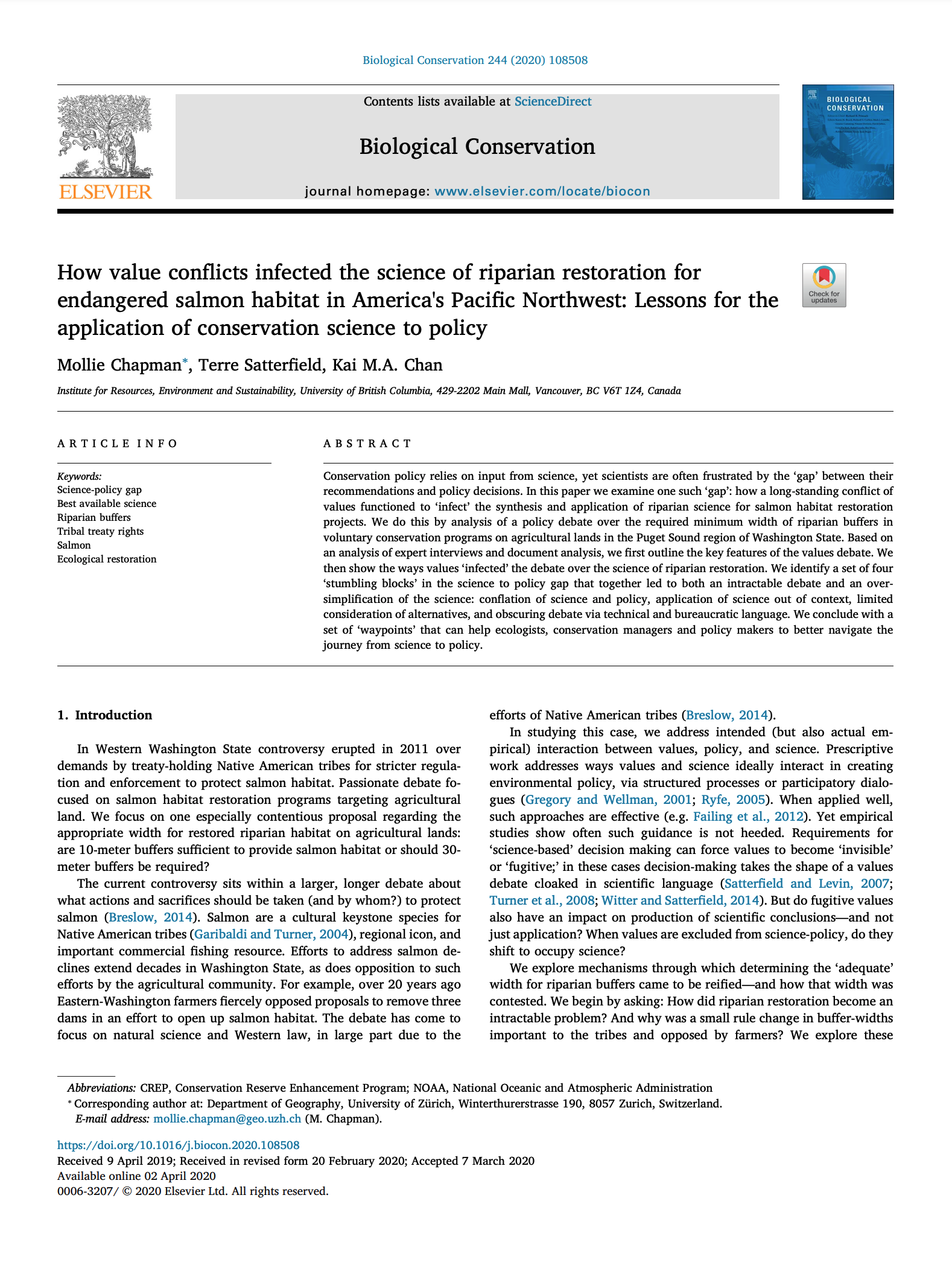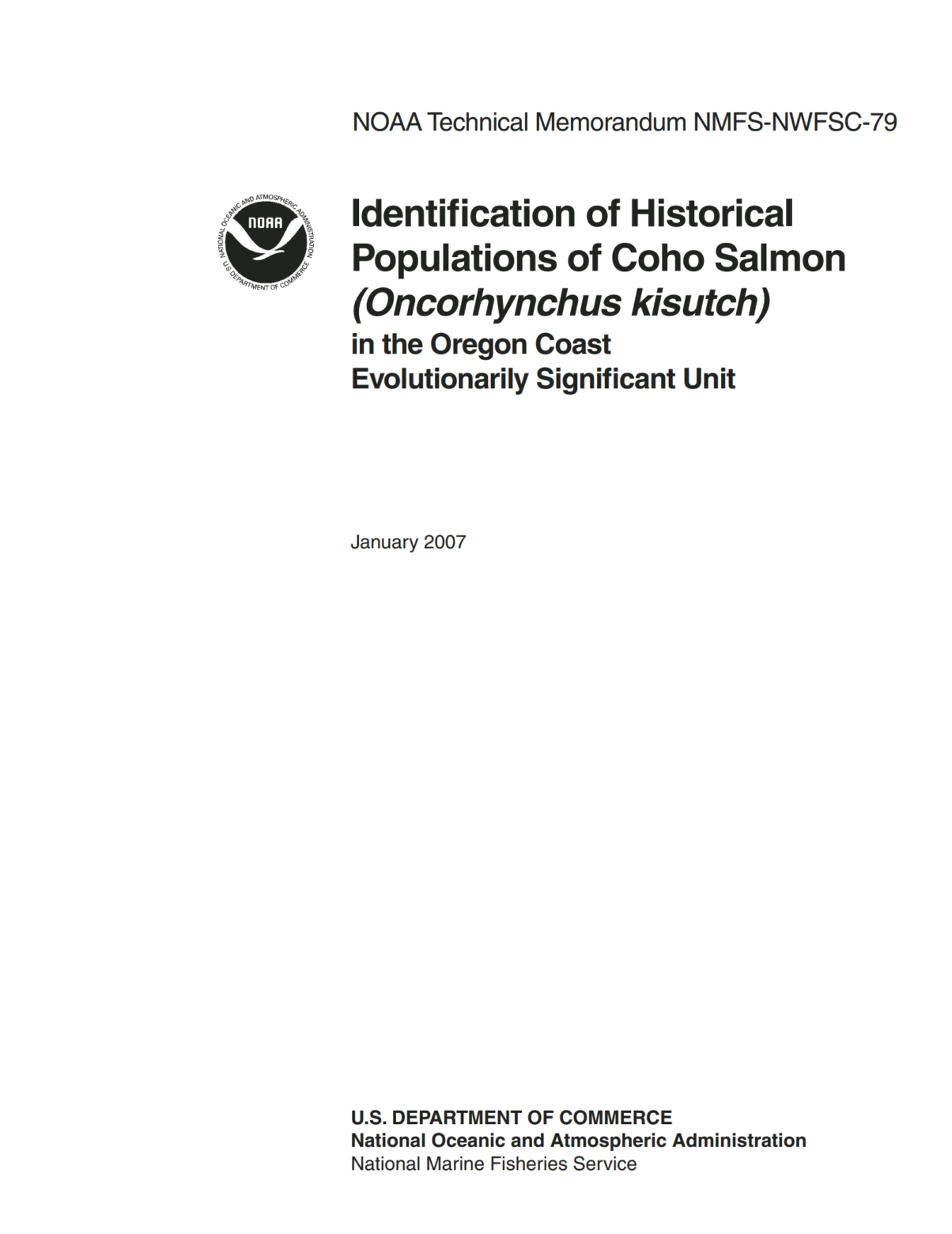Ecosystem Development Variations in a Pacific Northwest Tidal Wetland Restoration Project (Janousek et al, 2021)
admin2022-06-28T13:43:59+00:00Tidal wetland restoration through dike removal can enhance coastal ecosystem services, such as flood attenuation, fish production, and carbon sequestration. However, landscape-level heterogeneity may influence recovery. For a 169-ha restoration project in Tillamook Bay, Oregon, we hypothesized that areas of more intensive pre-restoration land use/land cover (cropping, grazing) would differ more from reference conditions before restoration than less-intensive uses and that initial post-restoration recovery would vary by land-use/land-cover type and wetland elevation. Before the restoration, the project site overall had higher nonnative plant cover, lower elevation and groundwater levels, and lower soil pH than reference high marsh, with some [...]

